Zaha Hadid Architects launches campaign to reinstate scrapped Tokyo stadium design
Zaha Hadid Architects has released a new movie detailing its design for its scrapped Tokyo 2020 Olympic stadium, which it describes as "the only way to achieve value for money in the market" (+ movie).
The film, which is over 20 minutes long, explains the decisions made during the two-year-long design process that lead to the current proposal, which was dropped last month by Japanese prime minister Shinzo Abe citing spiralling costs.

It also argues that starting again with a new design will not save the Japanese taxpayer any money so it could end up costing more in the long term, and the firm urges the government to reconsider its decision.
"The design should be seen as the only way to achieve value for money in the market," says Zaha Hadid Architects in the film.
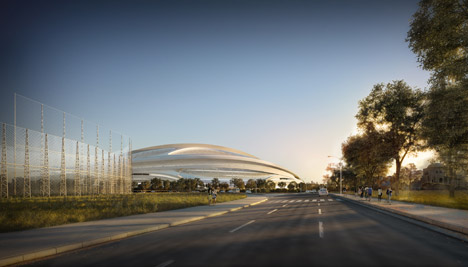
The estimated cost of the Japan National Stadium rose to 252 billion yen (£1.3 billion) last year and has seen opposition from many Japanese architects. The government has now decided to start again with a new design.
But the London-based firm claims the increase is due to a 25 per cent rise in costs across Tokyo's construction market over the past two years. In the film, it says it will be impossible to create an equivalent stadium for less money.
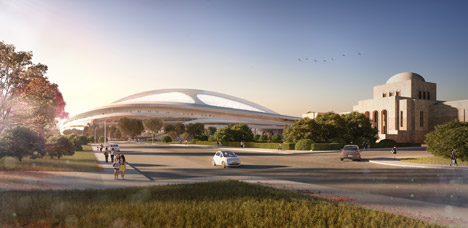
"To start the design from scratch is an unnecessary risk which we think the government should reconsider if its aim is to achieve a lower pricer than 252 billion yen," the firm says. "We believe the answer is to introduce more competition between the contractors but to not lose the benefits of the design."
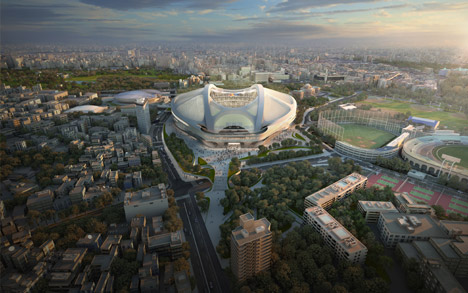
"Giving the design responsibility to the contractors means there is no real definition of value or quality except for a price and time schedule," it adds.
"A new concept design submitted with a price can not be trusted after five months of design work. It takes much more time to determine a design with complete price certainty, and by the time that certainty is achieved it will be too late. The Japanese public will get less value for money with this approach."
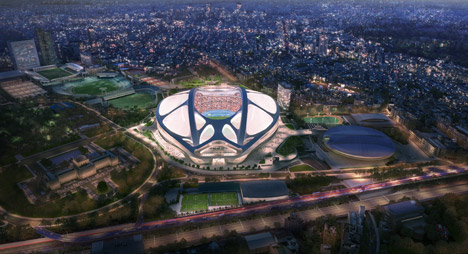
It also suggests its current design for the 80,000-seat stadium could be adapted to save money by omitting air conditioning for the seating, or by removing a bridge designed to offer the public views across the city skyline. But it insists the design can't be improved unless the objectives of the brief change.
"The stadium design is compact and efficient," the firm says. "It can not be improved upon unless the fundamental criteria of seating capacity alter, or a more competitive bidding situation is created to lower the price."
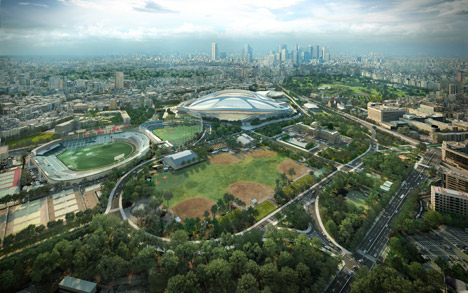
"It is a unique design which has been thoughtfully developed over two years to be not only beautiful but compact and efficient for this specific and special location in Tokyo," it continues. "The current design encapsulates all of the lessons learnt from our direct experience of other Olympic stadiums."
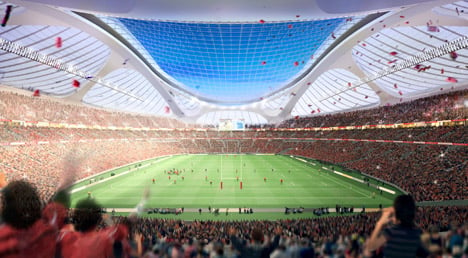
Zaha Hadid Architects won a competition to design the stadium in 2012, a year before Tokyo won the bid to host the Olympic and Paralympic games.
The design has been controversial from the start, as Japanese architects including Fumihiko Maki, Toyo Ito and Sou Fujimoto argued that it would be too big in relation to its surroundings, which include Kenzo Tange's iconic 1964 Olympic stadium.
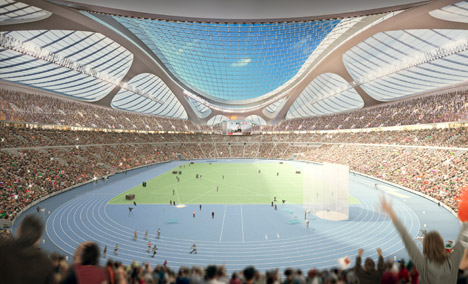
In December Hadid told Dezeen that the opponents were hypocrites that "don't want a foreigner to build in Tokyo for a national stadium", even though they build abroad themselves.
In the film, the firm maintains that the building's shape helps to reduce its visual impact on the site, and that its curved roof will reference both Japanese landscape bridges and Tange's iconic stadium.
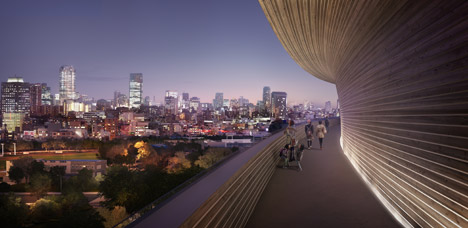
"We aspired to make the new stadium connect visually and symbolically with this Japanese icon of optimism so that Tokyo 2020 leaves Tokyo with a stadium as well conceived and as beautiful as this gymnasium from Tokyo 1964," it says.
Subscribe to Dezeen's YouTube channel for the latest architecture and design movies
"We have been aware since our competition submission in 2012 of the sensitivity of the site location with respect to the size of the stadium," it adds. "This is the reason why we proposed a saddle-seating bowl as opposed to a flat-top bowl."
Zaha Hadid previously designed the London 2012 Aquatics Centre. She is also working on a stadium for the 2022 football world cup in Qatar.
Images are by Methanoia.
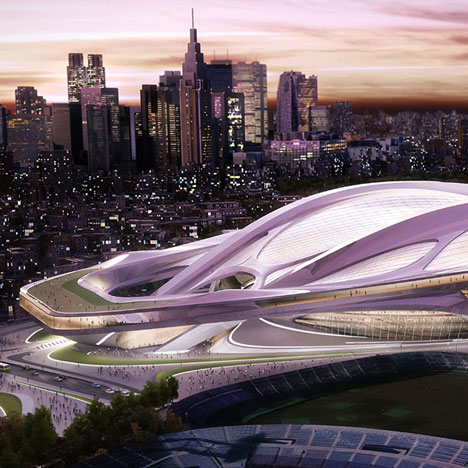
The Tokyo stadium was planned to host the opening and closing ceremonies for the 2020 games, as well as athletics, football and rugby events. It was earmarked to host the 2019 Rugby World Cup, as a possible venue for FIFA football matches, and for music concerts.
